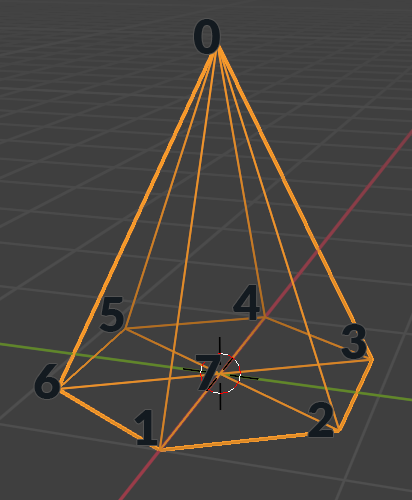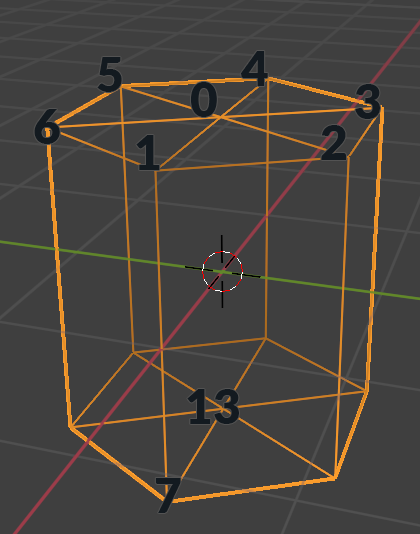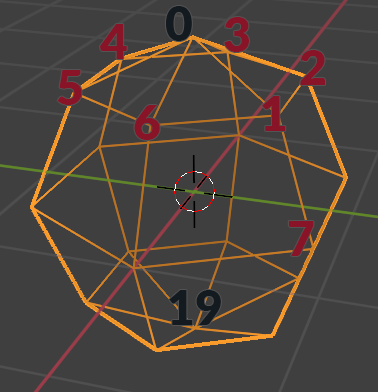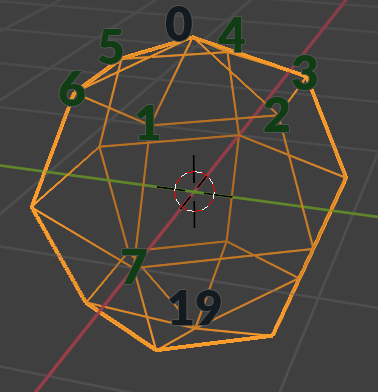Geometry Nodes: The UV of the UV Sphere are rotated for one extra segment #116809
Labels
No Label
Interest
Alembic
Interest
Animation & Rigging
Interest
Asset Browser
Interest
Asset Browser Project Overview
Interest
Audio
Interest
Automated Testing
Interest
Blender Asset Bundle
Interest
BlendFile
Interest
Collada
Interest
Compatibility
Interest
Compositing
Interest
Core
Interest
Cycles
Interest
Dependency Graph
Interest
Development Management
Interest
EEVEE
Interest
EEVEE & Viewport
Interest
Freestyle
Interest
Geometry Nodes
Interest
Grease Pencil
Interest
ID Management
Interest
Images & Movies
Interest
Import Export
Interest
Line Art
Interest
Masking
Interest
Metal
Interest
Modeling
Interest
Modifiers
Interest
Motion Tracking
Interest
Nodes & Physics
Interest
OpenGL
Interest
Overlay
Interest
Overrides
Interest
Performance
Interest
Physics
Interest
Pipeline, Assets & IO
Interest
Platforms, Builds & Tests
Interest
Python API
Interest
Render & Cycles
Interest
Render Pipeline
Interest
Sculpt, Paint & Texture
Interest
Text Editor
Interest
Translations
Interest
Triaging
Interest
Undo
Interest
USD
Interest
User Interface
Interest
UV Editing
Interest
VFX & Video
Interest
Video Sequencer
Interest
Virtual Reality
Interest
Vulkan
Interest
Wayland
Interest
Workbench
Interest: X11
Legacy
Blender 2.8 Project
Legacy
Milestone 1: Basic, Local Asset Browser
Legacy
OpenGL Error
Meta
Good First Issue
Meta
Papercut
Meta
Retrospective
Meta
Security
Module
Animation & Rigging
Module
Core
Module
Development Management
Module
EEVEE & Viewport
Module
Grease Pencil
Module
Modeling
Module
Nodes & Physics
Module
Pipeline, Assets & IO
Module
Platforms, Builds & Tests
Module
Python API
Module
Render & Cycles
Module
Sculpt, Paint & Texture
Module
Triaging
Module
User Interface
Module
VFX & Video
Platform
FreeBSD
Platform
Linux
Platform
macOS
Platform
Windows
Priority
High
Priority
Low
Priority
Normal
Priority
Unbreak Now!
Status
Archived
Status
Confirmed
Status
Duplicate
Status
Needs Info from Developers
Status
Needs Information from User
Status
Needs Triage
Status
Resolved
Type
Bug
Type
Design
Type
Known Issue
Type
Patch
Type
Report
Type
To Do
No Milestone
No project
No Assignees
5 Participants
Notifications
Due Date
No due date set.
Dependencies
No dependencies set.
Reference: blender/blender#116809
Loading…
Reference in New Issue
No description provided.
Delete Branch "%!s(<nil>)"
Deleting a branch is permanent. Although the deleted branch may continue to exist for a short time before it actually gets removed, it CANNOT be undone in most cases. Continue?
System Information
Operating system: Windows-10-10.0.19045-SP0 64 Bits
Graphics card: NVIDIA GeForce MX150/PCIe/SSE2 NVIDIA Corporation 4.6.0 NVIDIA 471.68
Blender Version
Broken: version: 4.0.2, branch: blender-v4.0-release, commit date: 2023-12-05 07:41, hash:
9be62e85b727Worked: Never.
Short description of error
UV map of UV Sphere Mesh Primitive does not match other GN Mesh Primitive
The UV map is offset by one segment. So the problem can be solved by rotating the sphere by one segment. Therefore, this issue is not a big deal.
GN. The UV of the UV sphere is not consistent with the rest of the Mesh Primitives.to Geometry Nodes: The UV of the UV Sphere are rotated for one extra segmentHi, I would like to try this as my first issue.
I made a fix where I moved the UV map.
I think the problem is caused by the order of the vertices, which is different in the case of UV Sphere compared to the other primitives.




I think a better fix would be to make the order of the vertices consistent, although this might break some node setups.
I think we don't necessarily have to solve this. I'm not aware of a use-case where this inconsistency actually causes problems. We never made the guarantee that the nodes in geometry nodes output exactly the same geometry as the normal primitives in Blender. Would have been nice of course but changing it now does not seem worth it.
If people reeeally need this, I think it may also be ok to add a legacy option to the node so that we support both modes at the same time. The difference between both modes seems small enough that this doesn't add too much complexity.
I think example file of this report is actually use case with demonstration of problem.
Yes, that is no strict rule, but that is visible inconsistency and i think would be good to fix that.
Unnecessary complexity. This is just rotation of mesh on really small angle. Mesh looks the same as in older versions.
Yeah, this will be visible for files which is depends on indices, but we should not use this as reason to do not fix or make the fix more complicated. Users should not depend on indices, and we even have utils to check if that is so.
For small resolution, difference can be as 0.333-size step of UV shift.
Well, there are cases when indices are supposed to be stable, and primitive nodes generally are such a case (unless otherwise noted by a call to
debug_randomize_*).I would like to be able to change the indexes of primitive nodes, there is always a way to do something faster by changing the topology model.
Yes, but in some cases that will actually need an option in the node so that the old behavior can be preserved. Without this, it's hard to impossible to create certain selections on procedural primitives.
I agree that line primitive indices should always match the step factor. But this doesn't seem to be a good method for selecting, for example, a sphere or a cube part. Indices don't always just match the right side if you need it (x>0 and y>0 for the same geometry). Then you have to do complex mod() or /x_indices_num, be deep into topology details, and so on. So, users just have to use positions as a more trivial alternative.
I sort of agree that we shouldn't necessarily guarantee the indices of the cube or sphere primitives, they're quite arbitrary and their may be benefits to changing the indices to be more spatially coherent, for example. But it's also not a huge deal if we have to support the old indexing in the future if that happens. For this change in particular I have basically the same opinion-- I'm not sure we need to maintain the old behavior, but it's not really a big deal to do that either.
Obviously, you wouldn't depend on indices for position dependent selections. It's more useful for selecting e.g. every second vertex in a specific edge loop. I'm quite sure that people are doing this kind of stuff already and I think it's ok for primitives. Note that we explicitly excluded ico spheres from that list so far, which supports index randomization.
For this kind of staff, user still need to be deep in to details of how topology of primitive are built. And this still can be done via positions or by using more specific nodes, like Edge Rings.
Glad that ico sphere can be excluded from the list of disputed nodes, but i have plans about merge all super-ball meshes. Cube, UV sphere, Cone, Cylinder, Circle, all of them is pretty similar meshes, and to share a lot of topology code, code related to positions and uvs, them can be changed. There is still ability to add options for different fill modes for top and bottom planes (grid, fan, n-gon, lines, star, ...) for all of this primitives at the same time. And also there is ability to make it possible to use weak users for attributes of primitives with trivial settings to cache them. There is still a lot other things that is not covered by so detailed steps for me now, and all of them required to be able to change indices.
I'm not against more functionality, but we need to remain compatible unless there is a strong reason not to. So far I'm not aware of why we can't stay compatible. Obviously, if new features are added, the indices can be different if those new features are used. I don't think there is a high cost to keeping existing files compatible.
Hm, actually, we can use
Sort Elementsto change indices as part of versioning today i guess